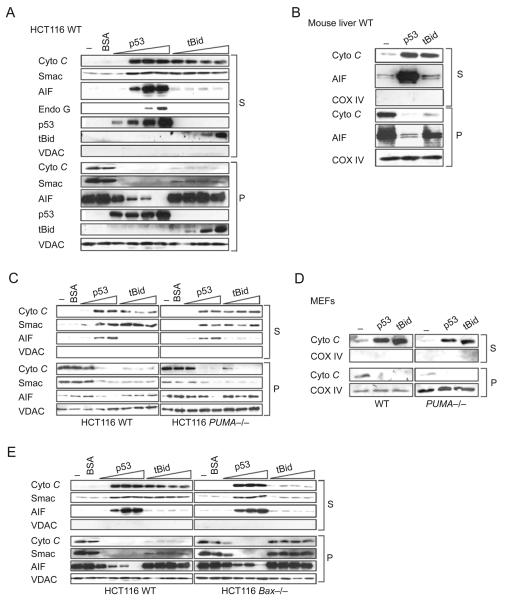Figure 2.
Mitochondrial p53 is highly efficient in inducing MOMP and the release of apoptogenic factors and does not require Puma and Bax. Purified mitochondria from (A) HCT116 WT cells or (B) WT mouse liver were incubated with buffer (−), bovine serum albumin (BSA) (400 nM) or increasing amounts of purified p53 (10, 20, 40, 100 nM) or tBid (10, 20, 50, 100 nM). The released apoptogenic factors cyto C, Smac, AIF and Endonuclease G were detected in the supernatants by immunoblotting (equal protein input per lane), and the retained amount of the indicated factors was detected in the pellet fractions. The level of p53 and tBid is shown in supernatants and pellets. S, supernatant; P, mitochondrial pellet. VDAC and CoxIV, mitochondrial loading controls. (C) p53-induced release of cyto C, Smac and AIF is Puma-independent. Mitochondria from WT and PUMA−/− HCT116 cells were incubated with buffer, BSA (100 nM), or increasing amounts of p53 (10, 20, 40 nM) or tBid (10, 20, 50 nM) and immunoblotted as in (A). (D) MOMP activity of p53 is Puma-independent in primary MEFs. Mitochondria from MEFs prepared from WT and PUMA−/− littermates were incubated with purified p53 (10 nM) or tBid (20 nM) and immunoblotted as in Figure 2A. (E) p53-mediated release of cyto C, Smac and AIF is independent of the effector Bax. Analysis as in (A).

